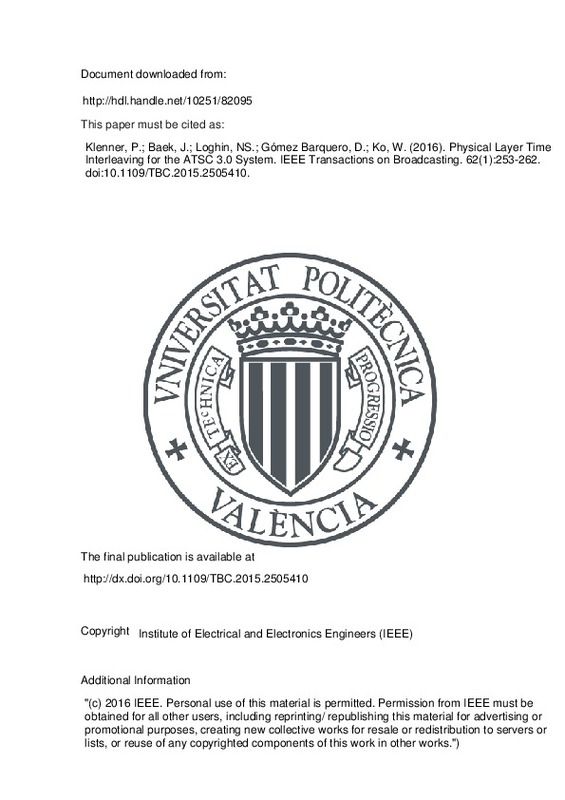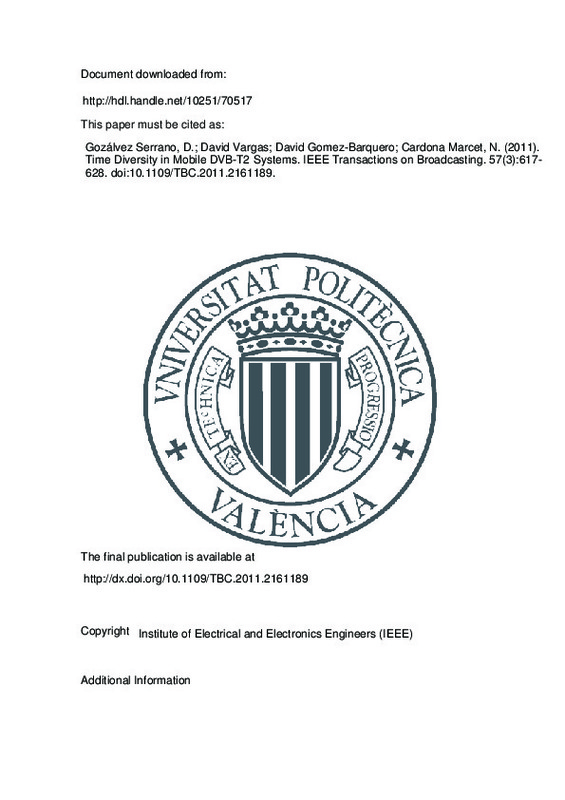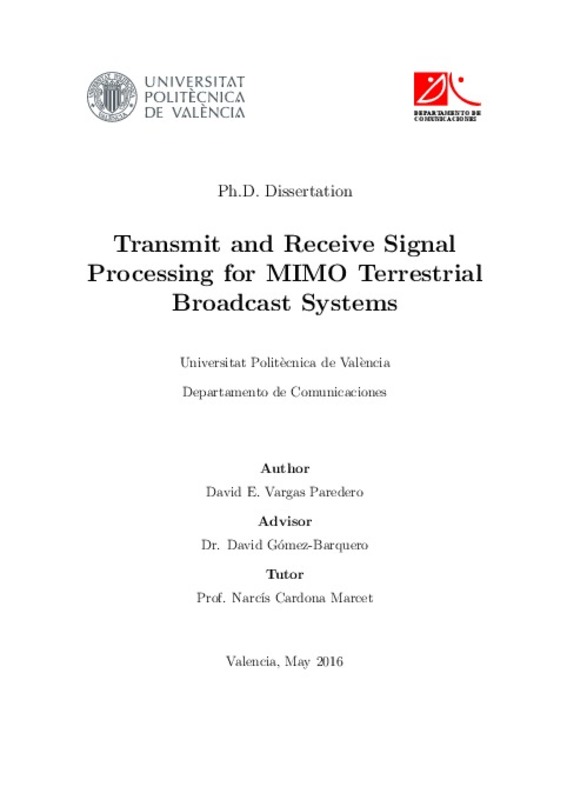JavaScript is disabled for your browser. Some features of this site may not work without it.
Buscar en RiuNet
Listar
Mi cuenta
Estadísticas
Ayuda RiuNet
Admin. UPV
Physical Layer Time Interleaving for the ATSC 3.0 System
Mostrar el registro sencillo del ítem
Ficheros en el ítem
| dc.contributor.author | Klenner, Peter
|
es_ES |
| dc.contributor.author | Baek, Jong-Seob
|
es_ES |
| dc.contributor.author | Loghin, Nabil Sven
|
es_ES |
| dc.contributor.author | Gómez Barquero, David
|
es_ES |
| dc.contributor.author | Ko, Woo-Suk
|
es_ES |
| dc.date.accessioned | 2017-05-31T11:33:32Z | |
| dc.date.available | 2017-05-31T11:33:32Z | |
| dc.date.issued | 2016-03 | |
| dc.identifier.issn | 0018-9316 | |
| dc.identifier.uri | http://hdl.handle.net/10251/82095 | |
| dc.description | "(c) 2016 IEEE. Personal use of this material is permitted. Permission from IEEE must be obtained for all other users, including reprinting/ republishing this material for advertising or promotional purposes, creating new collective works for resale or redistribution to servers or lists, or reuse of any copyrighted components of this work in other works.") | es_ES |
| dc.description.abstract | This paper presents optimized time interleaving which has been adopted for the Advanced Television System Committee 3.0 system as a physical layer tool to mitigate the effects of burst errors. The adopted time interleaver (TI) is very flexible and can have different configurations according to the number of physical layer pipes (PLPs) and service type, i.e., fixed, portable, and mobile. Notably, for single-PLP mode a sheer convolutional TI (CTI) is used, whereas for the multiple-PLP mode a hybrid TI (HTI) composed of cell interleaver, twisted block interleaver, and a convolutional delay-line is used. Optionally, the CTI and the HTI can be used in conjunction with extended time interleaving and a cell interleaver (only for HTI) to further improve robustness over long burst error lengths at the expense of latency. | es_ES |
| dc.language | Inglés | es_ES |
| dc.publisher | Institute of Electrical and Electronics Engineers (IEEE) | es_ES |
| dc.relation.ispartof | IEEE Transactions on Broadcasting | es_ES |
| dc.rights | Reserva de todos los derechos | es_ES |
| dc.subject | ATSC 3.0 | es_ES |
| dc.subject | Time interleaving | es_ES |
| dc.subject | Convolutional interleaving | es_ES |
| dc.subject | Multiple Physical Layer Pipes | es_ES |
| dc.subject | Cell interleaving | es_ES |
| dc.subject | Twisted block interleaver | es_ES |
| dc.subject | Convolutional delay-line | es_ES |
| dc.subject | Extended time interleaving | es_ES |
| dc.subject | PLP | es_ES |
| dc.subject | OFDM | es_ES |
| dc.subject.classification | TEORIA DE LA SEÑAL Y COMUNICACIONES | es_ES |
| dc.title | Physical Layer Time Interleaving for the ATSC 3.0 System | es_ES |
| dc.type | Artículo | es_ES |
| dc.identifier.doi | 10.1109/TBC.2015.2505410 | |
| dc.rights.accessRights | Abierto | es_ES |
| dc.contributor.affiliation | Universitat Politècnica de València. Instituto Universitario de Telecomunicación y Aplicaciones Multimedia - Institut Universitari de Telecomunicacions i Aplicacions Multimèdia | es_ES |
| dc.description.bibliographicCitation | Klenner, P.; Baek, J.; Loghin, NS.; Gómez Barquero, D.; Ko, W. (2016). Physical Layer Time Interleaving for the ATSC 3.0 System. IEEE Transactions on Broadcasting. 62(1):253-262. doi:10.1109/TBC.2015.2505410 | es_ES |
| dc.description.accrualMethod | S | es_ES |
| dc.relation.publisherversion | http://dx.doi.org/10.1109/TBC.2015.2505410 | es_ES |
| dc.description.upvformatpinicio | 253 | es_ES |
| dc.description.upvformatpfin | 262 | es_ES |
| dc.type.version | info:eu-repo/semantics/publishedVersion | es_ES |
| dc.description.volume | 62 | es_ES |
| dc.description.issue | 1 | es_ES |
| dc.relation.senia | 320824 | es_ES |







![[Cerrado]](/themes/UPV/images/candado.png)




